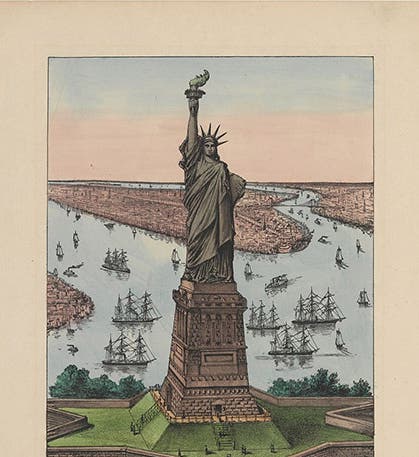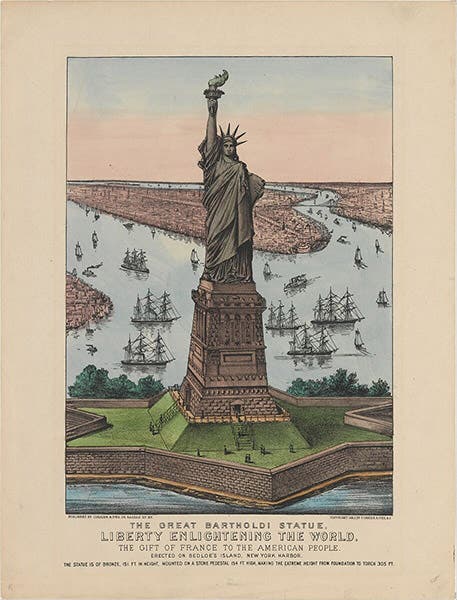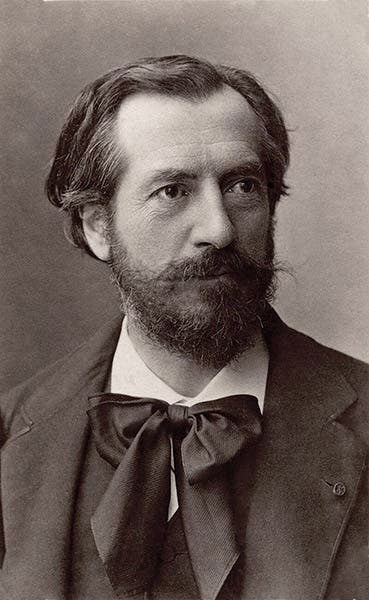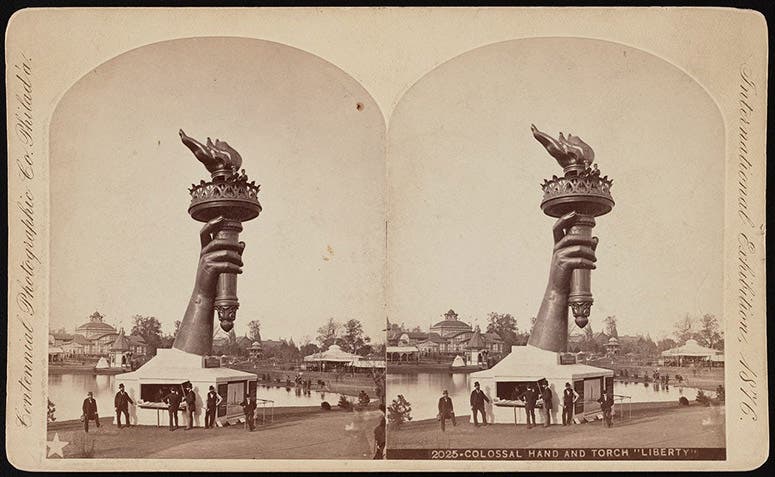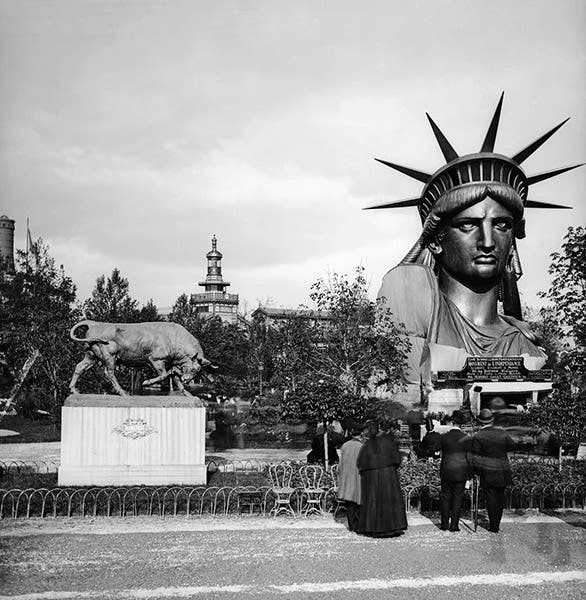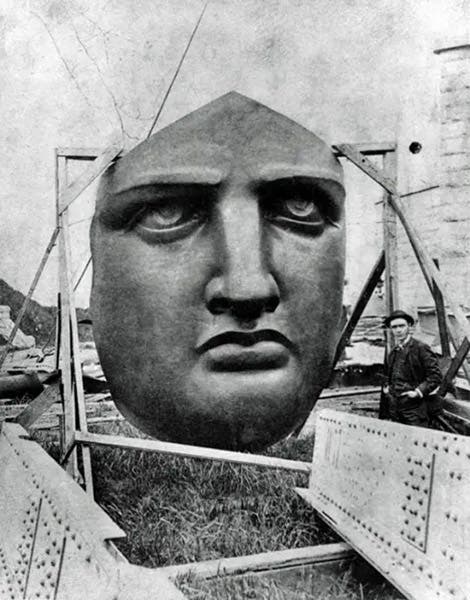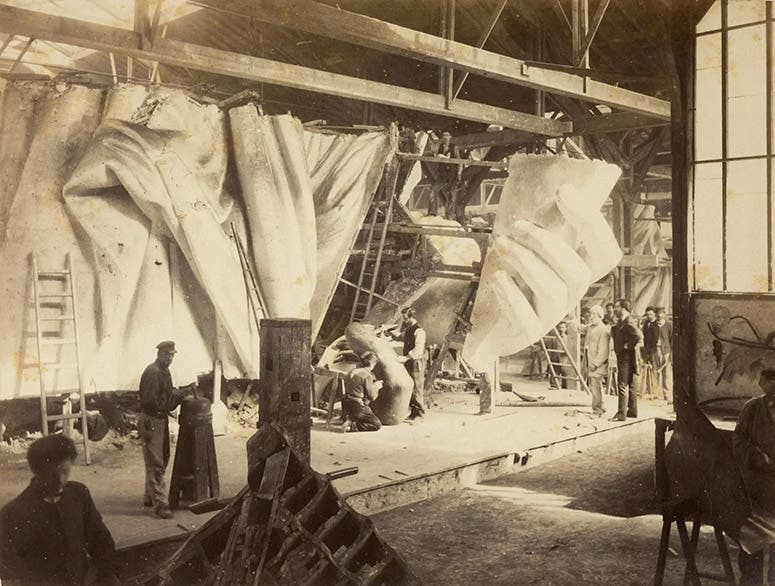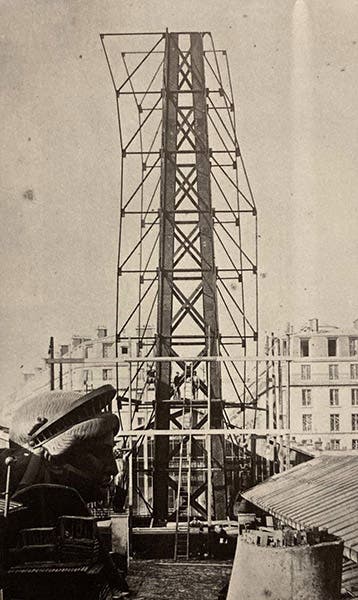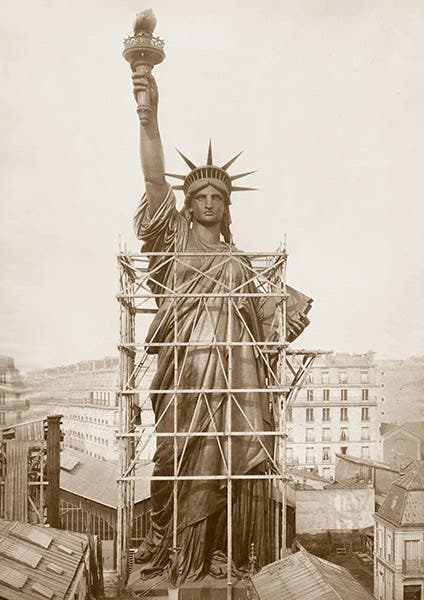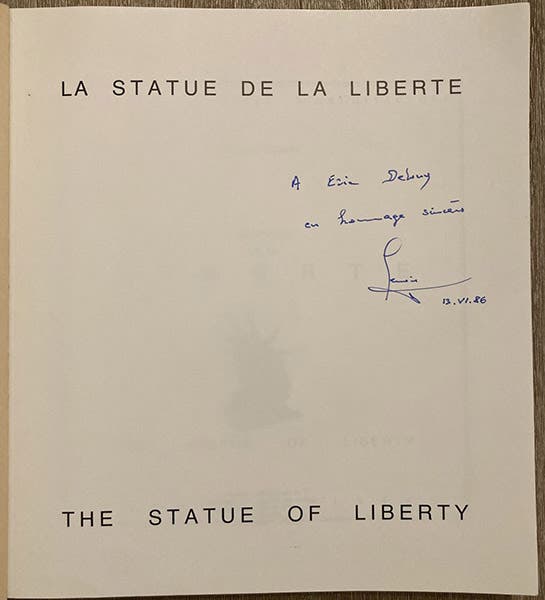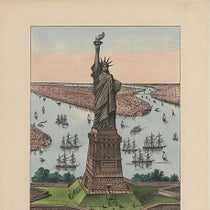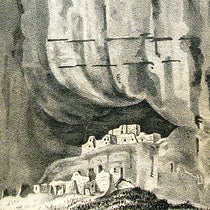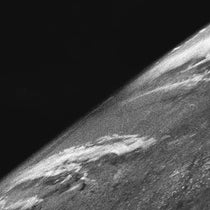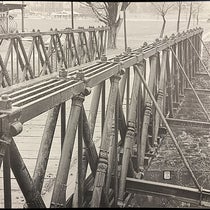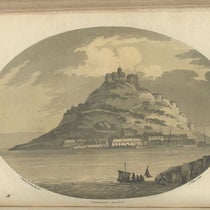Scientist of the Day - Frédéric Auguste Bartholdi
Frédéric Auguste Bartholdi, a French artist and sculptor, was born on Aug. 2, 1835, in Colmar in the Alsace region of northeastern France. He moved to Paris as a boy, studied drawing, sculpture, and architecture at various schools, before settling on monumental sculpture as his field of choice.
The possibility of a monument to American independence, to be given to the United States by France, first arose among a group of older friends of Bartholdi in 1865, as a way of reminding the U.S. of the assistance France had provided in the War of Independence , and as a subtle hint that perhaps the U.S. could return the favor and help restore a French democracy. This turned out to be prophetic, as the Second French Empire was toppled during the Franco-Prussian War in 1870 and was replaced by the Third French Republic, which was on very shaky grounds at first.
Bartholdi seems to have taken the design reins in 1871, when he began sketching and modeling a monument that he called Statue of Liberty Enlightening the World, which he imagined as a monumental outdoor sculpture, hundreds of feet tall. The thought in the minds of Bartholdi and his fellow dreamers was that the French would pay for the statue and its shipment, and the United States would build the pedestal and pay for the erecting of the statue. The theme of freedom and independence loomed even larger in Bartoldi’s mind when his beloved homeland of Alsace was ceded to the Prussians by the treaty signed In May of 1871. His mother, who returned to Colmar every summer and still owned the family homestead, was now a subject of Germany.
After his models and maquettes found support in France, Bartholdi sailed to New York in 1871 and found the perfect spot for a monument on Bedloe’s Island in New York Harbor. Carrying letters of introduction from several eminent French statesmen and lawyers, and being handsome and persuasive himself, Bartholdi soon found support for his project in New York and in other cities, such as Boston and Philadelphia. But for Bartholdi, New York Harbor was always the only choice for his statue.
As Bartholdi had in mind a monument 100 meters high, it could not be fashioned in bronze, for the weight would be prohibitive. Instead, he opted for a thin skin of hammered copper, known as repoussé copper, to be mounted over an interior armature. His original consulting engineer was Eugene Violette-le-Duc, who designed an internal structure of limestone. When Violette-le-Duc died in 1879, Bartholdi turned to Gustave Eiffel, who designed an iron armature, consisting of four pylons with an additional fifth pylon to support the right arm and the torch. This was before Eiffel set out to build his famous Tower in Paris (1889).
The torch and the right hand of the Statue of Liberty were displayed at the Centennial Exhibition in Philadelphia in 1876, which helped galvanize the fund-raising efforts in America (third image). The repoussé copper pieces were fashioned in the workshops of Gaget, Gauthier and Cie in Paris (sixth image). After finishing the right hand and torch for Philadelphia, Bartholdi went to work on the face, which would be one of the single largest pieces of copper in the sculpture (fifth image). It is always said that Bartholdi used the features of his mother as a model, and this seems to be true, by Bartholdi's own admission. This might account for the slight frown on Miss Liberty's gaze. However, Bartholdi had to accentuate all the facial features, so they would be discernible from a distance. The completed head was displayed at the Universal Exposition of 1878 in Paris, which was a boost to French fundraising (fourth image).
As Bartholdi waited for the Americans to finish raising money for the pedestal, it was decided to erect the sculpture in Paris, using Eiffel's armature, to see if the construction was going to work. It did, and photos of Miss Liberty towering over the buildings of Paris are very powerful (eighth image), and unfortunately evocative, for audiences who lived through the 1980s, of the Stay-Puft Marshmallow Man of the film Ghostbusters.
Once the needed funds were raised in both countries, construction proceeded without any serious hitches. The Parisian statue was disassembled, packed into hundreds of crates, and shipped to Bedloe's Island, where the pedestal awaited the construction engineers. The statue was completed and dedicated on this date, Oct. 28, 1886. The plaque in her left hand bears the date (in Roman numerals): July 4, 1776, the date of the U.S. Declaration of Independence.
Most of the details here on the design and erecting of the Statue of Liberty were drawn from a book commissioned by the French Institute of Archaeology and published in 1986 on the 100th anniversary of the unveiling of the statue. It contains many photos not available elsewhere on the various stages of production (we used one here), and was published with French and English text in parallel columns. The book, titled La Statue de La Liberte/ The Statue of Liberty, was written by Bertrand Lemoine. If you read my post of five days ago, Oct. 23, on bridge engineer and book collector and donor Eric DeLony, you might be interested to see that Mr. Lemoine presented an inscribed copy in 1986 to Mr. DeLony (last image), who in turn gave it to us, and there it awaited me, when I went looking for a good book on the building of Bertholdi's wonderful statue.
William B. Ashworth, Jr., Consultant for the History of Science, Linda Hall Library and Associate Professor emeritus, Department of History, University of Missouri-Kansas City. Comments or corrections are welcome; please direct to ashworthw@umkc.edu.

